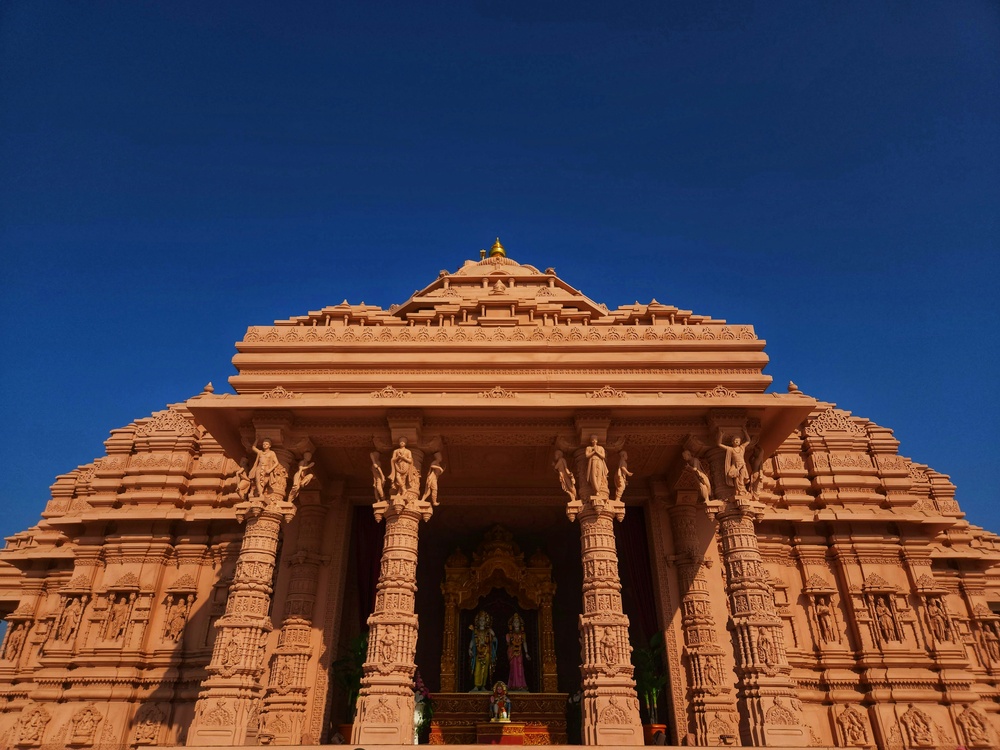Ayodhya Travel Guide: Know the Best Time to Visit for a Spiritual Experience
Ayodhya, nestled on the banks of the sacred Saryu River in Uttar Pradesh, is a revered destination for spiritual seekers, history lovers, and cultural explorers alike. As the birthplace of Lord Rama and a significant center of Hinduism, Ayodhya welcomes pilgrims year-round. But to truly experience its spiritual serenity, divine festivals, and historical landmarks, it’s important to know the best time to visit Ayodhya.
This comprehensive Ayodhya travel guide takes you through seasonal conditions, religious events, and travel tips to help you plan the perfect pilgrimage or spiritual retreat.
Why Visit Ayodhya?
Ayodhya is not just a religious site — it’s a city steeped in mythology, sacred rituals, and architectural wonders. Home to the Ram Janmabhoomi, Hanuman Garhi, Kanak Bhawan, and several ancient temples, it radiates devotion and spiritual peace.
Pilgrims flock here to connect with their faith, witness grand religious processions, and immerse themselves in the city’s timeless spiritual energy. Choosing the right season helps enhance this experience, making every visit more meaningful.
Best Time to Visit Ayodhya: A Seasonal Breakdown
Ayodhya’s climate consists of three distinct seasons — winter, summer, and monsoon. Each brings a unique charm and challenges, but some months clearly stand out as the best for travel and pilgrimage.
1. Winter (October to March): The Best Time to Visit Ayodhya
Winter is widely considered the best time to visit Ayodhya. During this period, the temperature ranges between 10°C and 25°C, making the weather ideal for sightseeing, temple visits, and attending religious festivals.
Why Winter Is Perfect:
- Cool and pleasant weather for exploring temples and ghats
- Comfortable for elderly pilgrims and families
- Major festivals like Diwali and Ram Navami take place
- Serene mornings and evenings for spiritual reflection by the Saryu River
If you’re planning a meaningful spiritual trip, the winter months offer the ideal setting with the added joy of cultural festivities.
2. Summer (April to June): Best Avoided by First-Time Visitors
Summer in Ayodhya is hot and dry, with temperatures often reaching 40°C or higher. While it’s still possible to visit, outdoor activities and temple tours during the day can become tiring.
Considerations for Summer Travel:
- Fewer tourists, offering a quieter experience at temples
- Best to explore in early mornings or late evenings
- Necessary to carry water, sun protection, and light cotton clothing
Though not the best time to visit Ayodhya, summer may appeal to those who prefer less crowded settings and are comfortable with heat.
3. Monsoon (July to September): Lush but Humid
Monsoon brings refreshing rains and greener surroundings, but also high humidity and occasional downpours. The temperatures range between 25°C and 35°C.
Pros:
- The city looks rejuvenated and vibrant
- Hotel prices are lower, making it budget-friendly
- Lesser crowds at major sites
Cons:
- Rain can disrupt outdoor plans and road travel
- Wet conditions make temple steps and ghats slippery
Spiritual travelers who prefer peace and don’t mind occasional rain showers can consider visiting during this season, though first-timers may find winter more convenient.
Key Festivals to Experience in Ayodhya
For a spiritually rich journey, planning your visit around Ayodhya’s major festivals can be incredibly rewarding.
1. Diwali and Deepotsav (October/November)
Ayodhya’s Diwali celebrations are legendary. Celebrated as the return of Lord Rama to Ayodhya after 14 years of exile, Deepotsav witnesses the lighting of over a million diyas along the Saryu ghats, cultural performances, and spiritual fervor that’s unmatched anywhere else.
2. Ram Navami (March/April)
The birthday of Lord Rama is celebrated with grand processions, temple rituals, and massive gatherings at Ram Janmabhoomi. It’s one of the most spiritually charged times to be in the city.
3. Makar Sankranti (January)
This harvest festival brings pilgrims for early morning holy dips in the Saryu River. The temples remain active with rituals and special prayers.
4. Shravan Month (July–August)
During this monsoon month, devotees offer prayers at Shiva temples and engage in spiritual rituals. It’s a quieter yet deeply devotional time in the city.
Spiritual Places to Visit in Ayodhya
- Ram Janmabhoomi – The sacred birthplace of Lord Rama, now a grand temple under construction
- Hanuman Garhi – A hilltop temple dedicated to Lord Hanuman, offering panoramic views
- Kanak Bhawan – A beautiful temple believed to have been gifted to Sita by Queen Kaikeyi
- Treta Ke Thakur – A temple commemorating Lord Rama’s Ashwamedha Yagna
- Saryu River Ghats – Ideal for evening aarti and peaceful reflection
Essential Travel Tips for Ayodhya Visitors
- Book Accommodation in Advance: Especially during festivals like Diwali and Ram Navami.
- Wear Modest Clothing: Respect local customs by wearing traditional or conservative outfits when visiting temples.
- Hire a Local Guide: Gain deeper insights into the spiritual and historical importance of key sites.
- Stay Hydrated & Carry Essentials: Particularly important during summer and monsoon months.
- Check Local Schedules: Some temples have fixed opening hours and restrictions on photography.
Conclusion: Plan Mindfully for a Divine Experience
Ayodhya is a destination where spirituality, history, and devotion converge. Whether you are a devotee seeking divine connection or a traveler exploring India’s cultural depth, knowing the best time to visit Ayodhya enhances your journey.
For ideal weather, vibrant festivals, and spiritual ambiance, the October to March window is your best bet. Diwali’s Deepotsav and Ram Navami in particular offer once-in-a-lifetime experiences. While the summer and monsoon seasons have their unique charms, they are best suited for seasoned travelers or those seeking quieter visits.
Plan ahead, travel mindfully, and let the holy city of Ayodhya leave a lasting impression on your soul.


